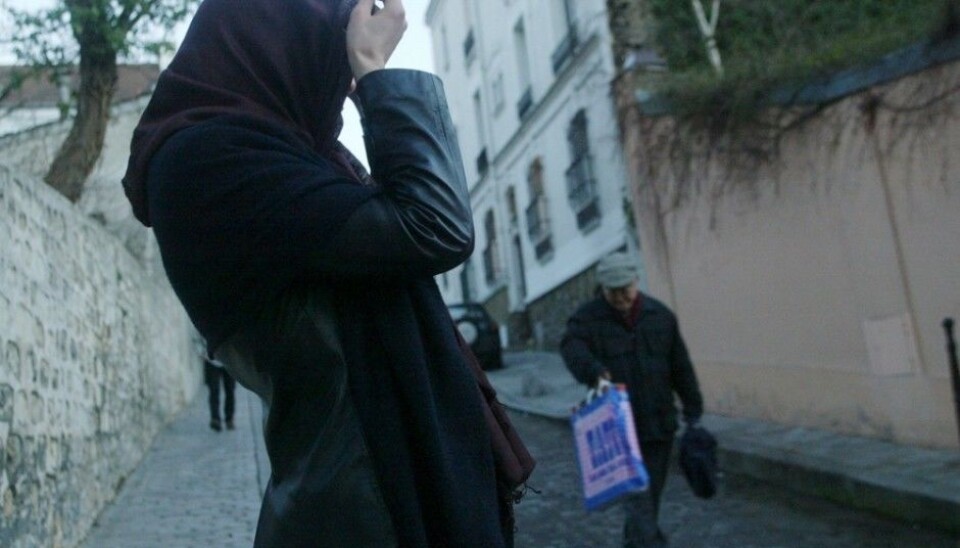
Out on a limb after forced marriage
They have fled from forced marriages and “honour” related violence. After receiving shelter and help for half a year, many find themselves left to cope single-handedly.
Denne artikkelen er over ti år gammel og kan inneholde utdatert informasjon.
Undisclosed places to live have been set up in five locations in Norway for persons who have been subjected to forced marriages and family violence which is so-called “honour” related.
They are offered such refuge under strong protective security for six months, as police evaluate their safety and what is needed to secure it.
“Many of the young people residing in these state-run facilities have shocking tales of violence to tell. Some are under the shadow of extreme threats. They have had to move away from their families, friends and networks and take on new identities,” says Julia Orupabo, project leader at the Norwegian Institute for Social Research.
She and researcher Marjan Nadim have carried out a study of the needs of young people who are subjected to forced marriages and honour-related violence. They have evaluated how the national shelters for such victims meet their needs and follow them up.
Both employees and residents were interviewed in the study.
Care and security

The shelters that young people move to can be collectives or individual flats. Professionals work there and help them with practical issues and challenges, such as gaining empowerment and improving their self-images.
One of the girls, a relatively newly arrived immigrant, relates:
“I’m a girl from a culture where I went from being the property of my family to being the property of my husband. Everyone had done things for me. It was a shock to come to the shelter. They taught me how to take the bus, how to get up in the morning ― how to tackle daily life. I learned to speak Norwegian, go to school, deal with the public authorities. This has been a big change in my personality.”
The employees at the shelter facility strive to help the young persons to be capable of taking care of themselves. After six months they are supposed to be able to live solo and master daily life without their family ― practically, socially and emotionally.
“The persons we spoke with feel their needs for care are covered and they are members of a community while living in the facility. The young people say that relationships can be so close that they refer to the employees as their family, mother and sister,” says Orupabo.
The shock of moving out
But it’s all over after six months.
The move out can be a shock for some. They experience it as a new break-up with people to whom they’ve become attached. Many become all alone in the world.
A former resident explains:
“I called those who work at the shelter and asked whether I could come and have lunch with the residents and chat, but they said no. It takes a lot before I’d ask for help. I’m a proud woman and don’t like to ask for assistance. Now that door is closed to me. I can’t ask them again.”
Out on a limb
“Even though many of the residents in these shelters were born here and have grown up in this country, they often come from controlling families where others have made decisions for them. Now they are out on a limb and have to pay their bills and tackle all the practicalities themselves.”
Many need information about what help they can get from the welfare services, the National Insurance Scheme, police, mental health services and family therapy services.
Nevertheless, not many experience being fully denied contact. What most mention is that the follow-up efforts are insufficient. The ex-residents wish the employees would get more in touch. They would like them to call to ask if they are doing okay, or maybe stop by for a coffee.
“But these experiences differ. Even though the residents have been in the same municipalities, their observations of events and follow-ups can be dissimilar,” says Orupbao.
Learning to trust others
She explains that an environment encompasses more than the relationship between staff at a shelter and the young residents. The personnel also have to teach the young people to trust others.
“We think there should be stronger requirements regarding how the initiatives are tethered to the care system outside the shelter. Some of the shelter facilities are good at this, whereas others leave the young people much more to fend for themselves after they move out.”
Many of the employees feel that the residents are not ready to make do on their own when their time is up. They are incapable of linking up with the ordinary health and welfare services. Instead, they continue to contact the staff at the shelters.
Felt as a betrayal
“Once such closeness has been forged it is hard for vulnerable young people to move on to the next person in the public system. We think there should be more flexibility so that the youngsters don’t risk feeling they are going through a new break-up,” says Orupabo.
“Many felt it as a betrayal when the follow-up team withdrew.”
In the municipalities where the researchers think this transition is implemented successfully, the welfare systems were linked up with the young people while they were still residents. So they were not solely encountering complete strangers after the move.
Many of the employees interviewed by the researchers said they felt there was a need for follow-ups beyond the six months. But this is a dilemma. What do you do when the residents have need for more?
Many employees sidestep the guidelines
Many sidestep the guidelines, according to the researchers. If they think the young people are not ready to move out, they often hang on to them longer.
“We could say no, we can’t help. But we choose to help. We are in a bind and feel this is becoming more and more of a challenge,” says an employee.
In reality it’s hard to cut the ties to former residents who have no one else in the world to turn to for support.
One of the employees describes a typical situation:
“She (a former resident) had a birthday and wanted to invite us. How can we say no to something like that? There was no one else she could ask.”
Looking at the finds
The Norwegian Directorate for Children, Youth and Family Affairs, which is in charge of the assistance given to these young clients, plans to consider the researchers recommendations and the findings in their report.
“We will take a close look at continued initiatives for residence and support. It is still too early to say, however, what might be done or how it will be done,” days Director Mari Trommald.
------------------------------------------
Read the Norwegian version of this article at forskning.no
Translated by: Glenn Ostling



































